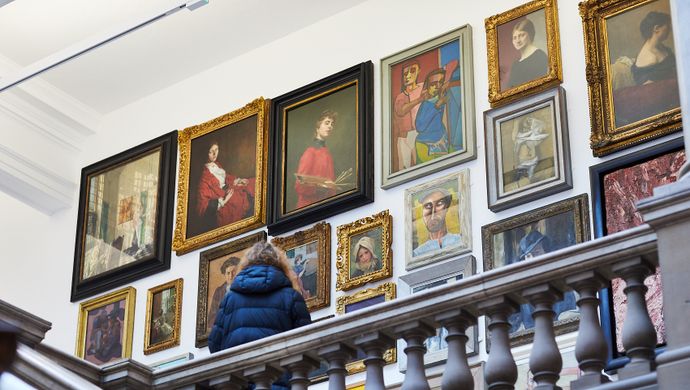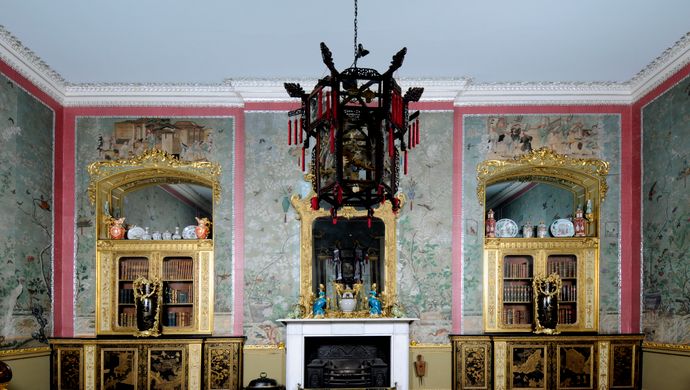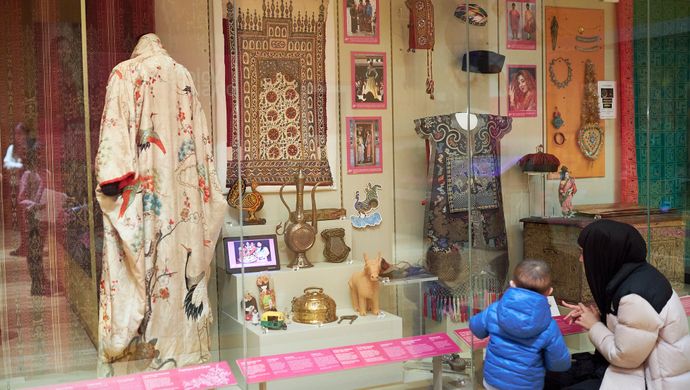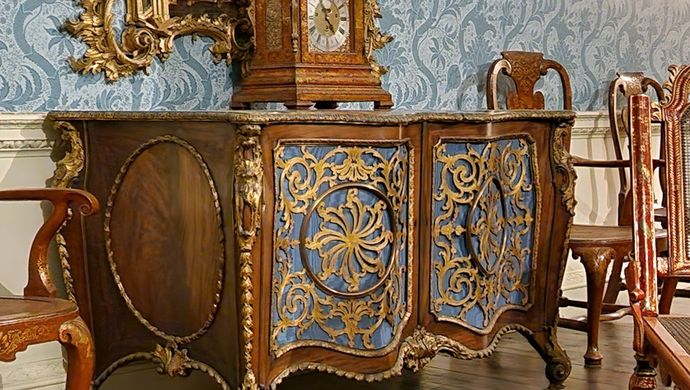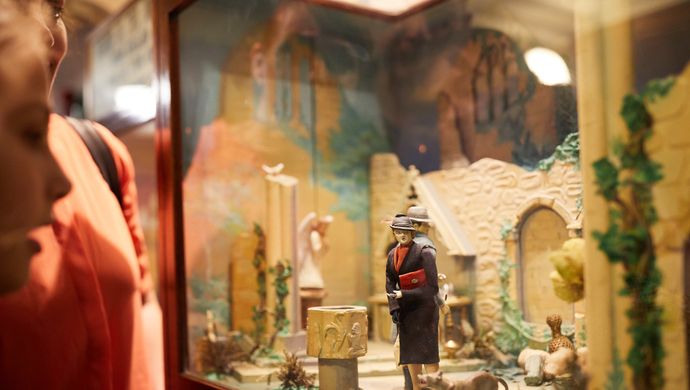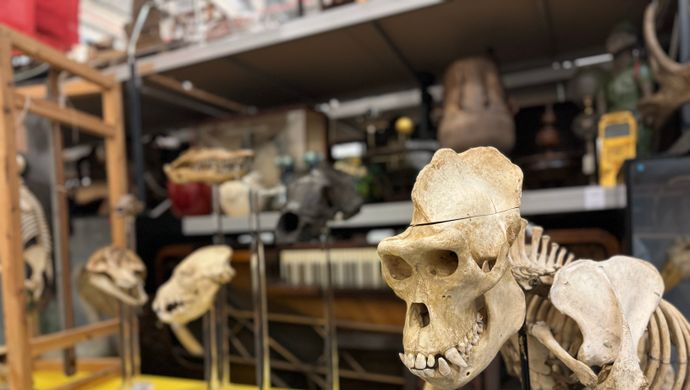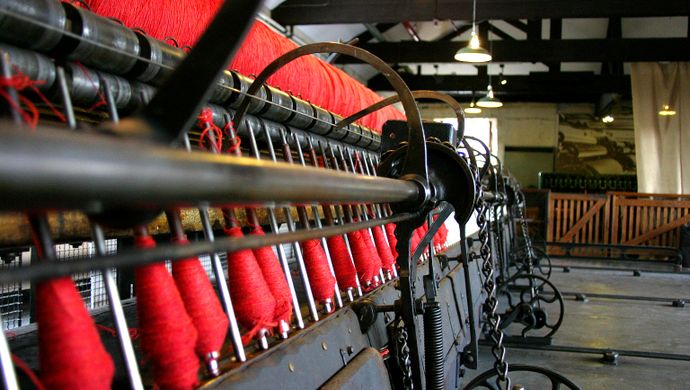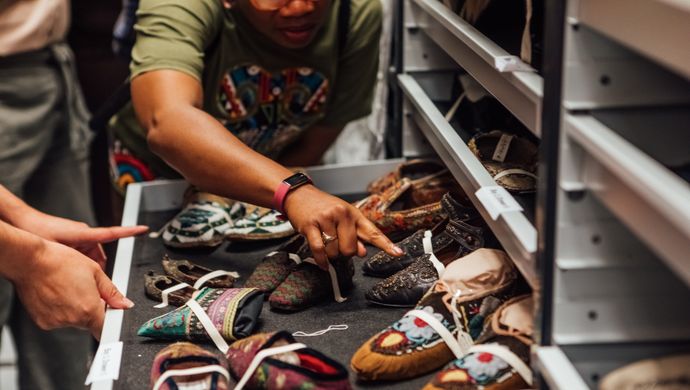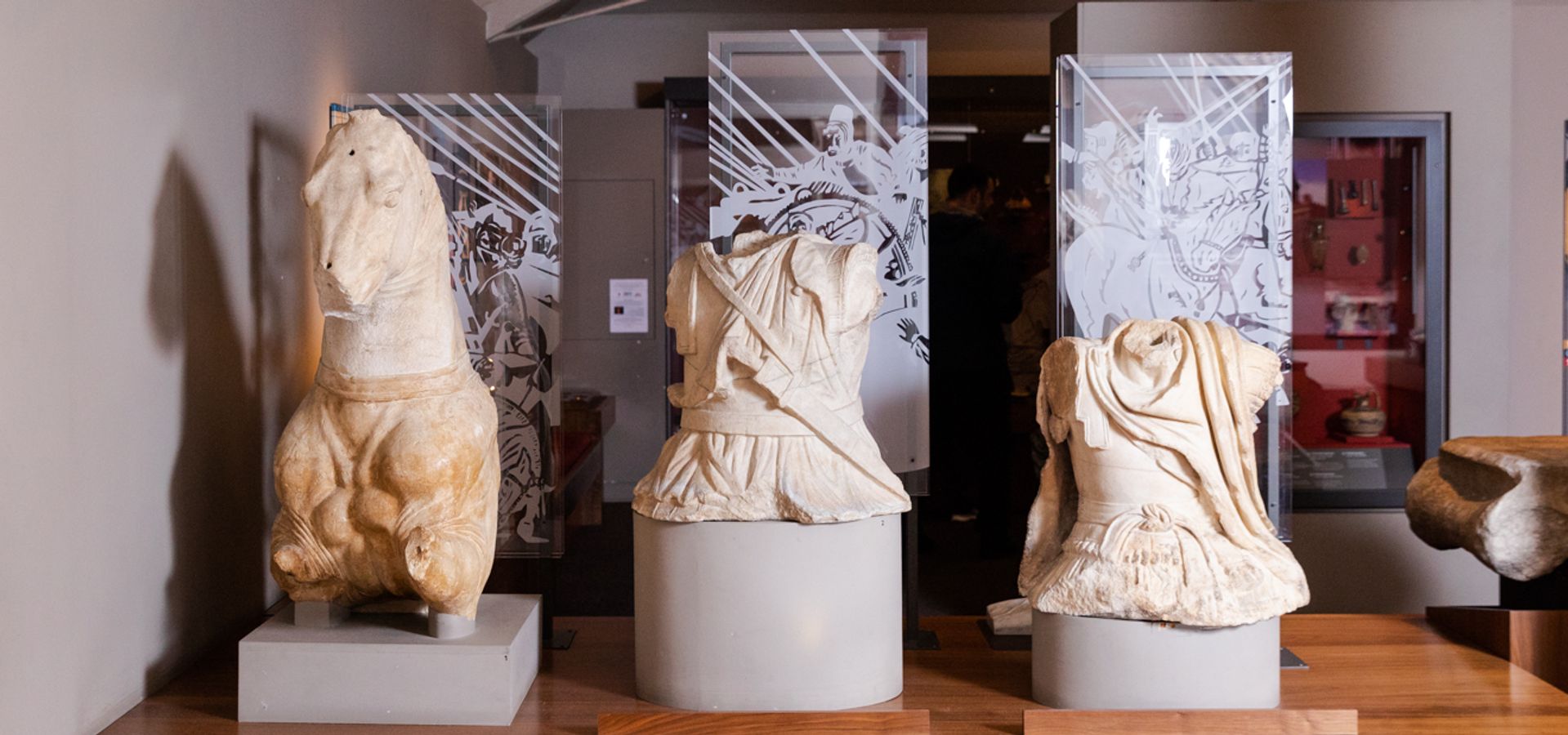
Archaeology and Numismatics
The Leeds archaeological collections are diverse and cover many thousands of years of history and prehistory.
They represent a wide range of ancient cultures from around the world.
The numismatics collection is made up of around 25,000 objects related to currency (coins, paper money, tokens, etc), as well as medals, seals and badges.
Most of this collection is kept at Leeds Discovery Centre, but highlights can be seen on display at Leeds City Museum, Kirkstall Abbey and online on Google Arts & Culture.
There are two galleries showcasing archaeology in Leeds City Museum. The archaeology of the Leeds area can be explored in The Leeds Story, and treasures of Egypt, Greece and Rome are on display in the Ancient Worlds gallery. The archaeology collections also regularly feature in a wide range of temporary exhibitions.
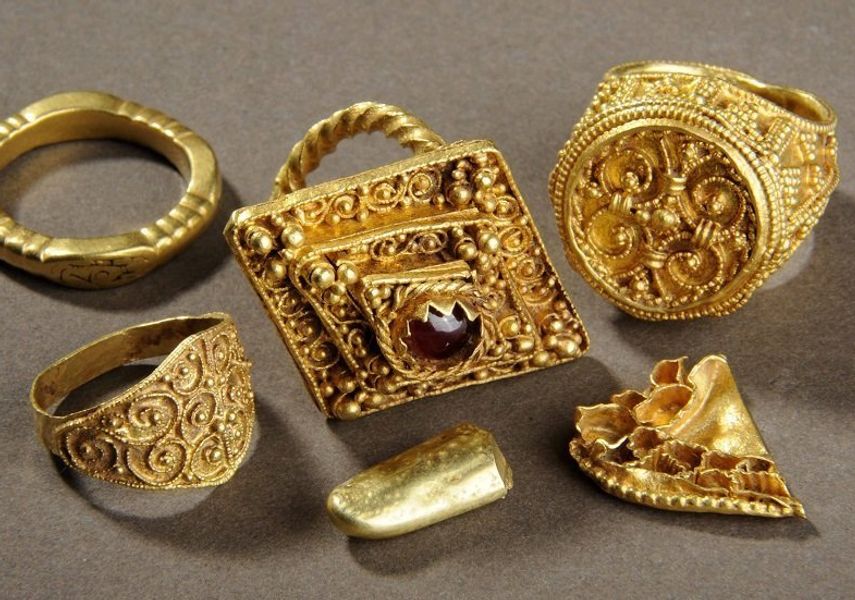
Collection Highlight
The West Yorkshire Hoard
Seven amazing Anglo Saxon objects were found in the Leeds Metropolitan District by a metal detectorist in 2008.
Four of the objects are gold rings, two of which are of the highest quality from this period, along with a gold brooch fragment, a gold ingot fragment and a lead spindle whorl.
The ‘find’, known as the West Yorkshire Hoard, was acquired by Leeds Museums & Galleries in 2012 after going through the Treasure process. We raised money to keep them in Leeds from the National Heritage Memorial Fund, the Art Fund (with a contribution from the Wolfson Foundation), The Headley Trust, Leeds Philosophical and Literary Society, Friends of Leeds City Museums, and The Goldsmiths’; Company, as well as generous donations from local societies and the public.
See the West Yorkshire Hoard on display at Leeds City Museum. A selection of objects from the Hoard are also available to view on Google Arts & Culture.
Human Remains
We care for a substantial collection of human remains which were once parts of living people. We’re committed to caring for them in a respectful manner while also making the collections available for research and engagement where appropriate, in line with our human remains policy.
In 2018 we carried out a research engagement project during the run of an exhibition called ‘Skeletons: our Buried Bones’ held at Leeds City Museum. We asked visitors what they thought about museums having and using human remains, and allowing photography of human remains on display, in order to inform the human remains policy going forward.
The final report on Visitor Responses to Human Remains in Leeds City Museum is available to view online.

